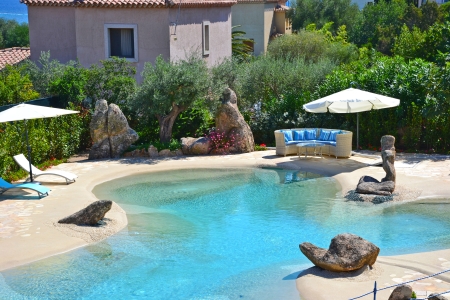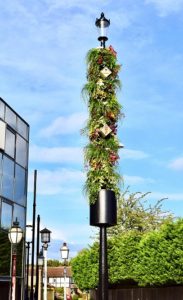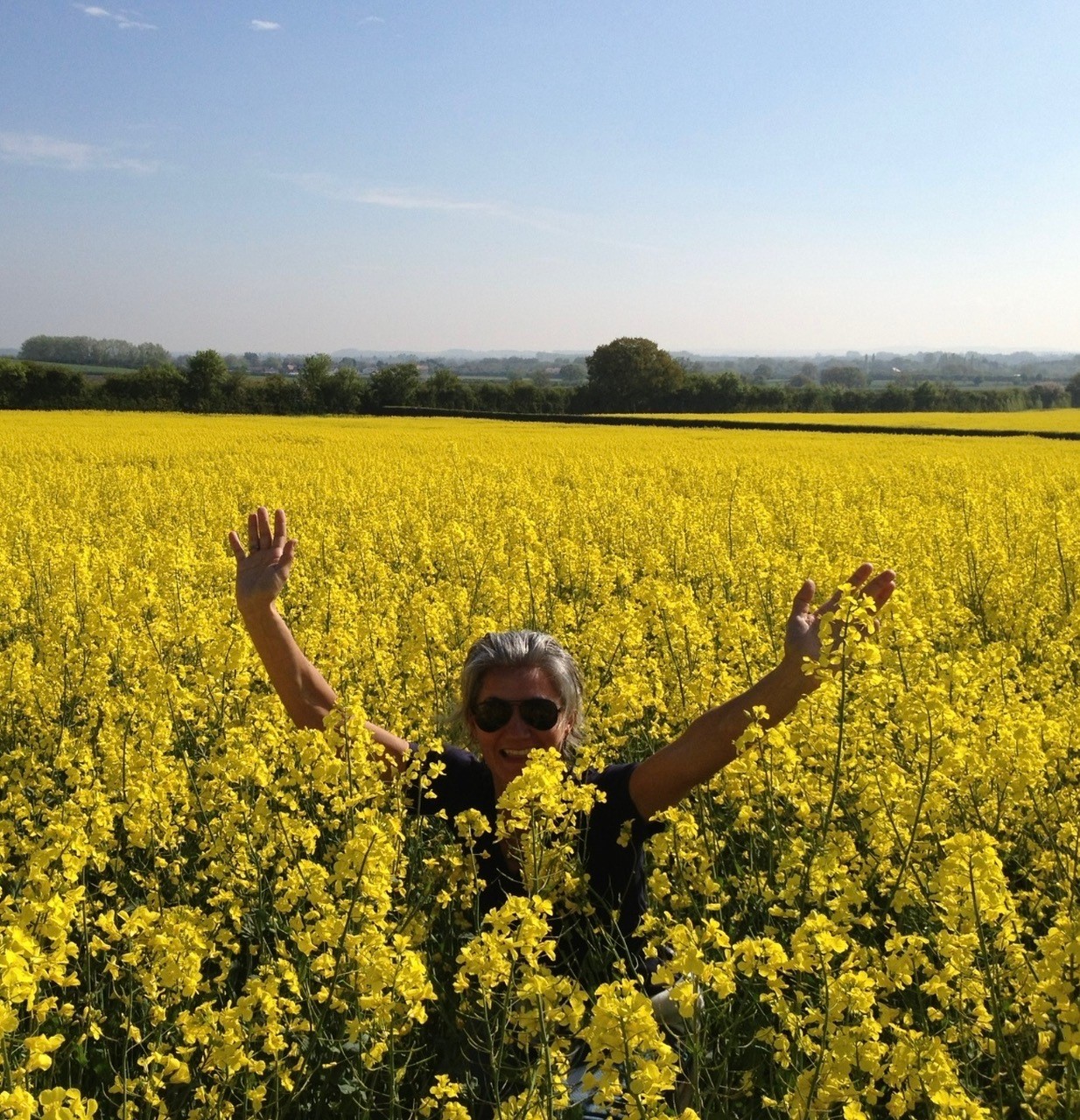Swimming pools, lampposts and bees… what do they all have in common?
Swimming pools, lampposts and bees… what do they all have in common?
In this month’s blog, I want to share with you some of the amazing opportunities that have presented themselves to me in the past few months, and how a design mindset sets a base for endless possibility
With a design mindset, there are no limits
When is an interior designer not an interior designer?
Always!
To explain this little riddle, let me expand…
As with so many broad career fields, there is a tendency to use descriptive labels which specify and delineate a specialism or area of expertise: ‘I’m a lawyer, ‘I’m an Economics lecturer’.
And certainly, the additional knowledge and insight that individuals hold in these particular fields is valuable and important. But underneath it all lies a common mindset that spans across the broader field in general – and that’s important to remember too.
So when it comes to being an interior designer, what that really means is that whilst the knowledge developed relates mostly to internal living spaces, the mindset is much more one of design in general. It’s a way of seeing the world, understanding relationships of space, shape and place, not to mention people and time. Of negotiating the tension between form and function. Of respecting tradition but thriving on innovation. In essence, in seeing the potentiality of everything.
Historically, I’ve always felt drawn to deploying this design mindset in the context of interior spaces – in part because these are some of the most intimate and human spaces that we find ourselves in, and thus it allows me to develop a uniquely personal connection with my clients. But ‘design’ is not something you just ‘switch off’ when a project is finished; my brain is set permanently to the act of designing as I engage with the world around me – constantly rearranging, reimagining, reshaping.
Which is why I was so pleased to be offered two design opportunities recently which sit outside of my normal ‘wheelhouse’, but which allow me to sink my teeth into a new subject matter, bringing with it as it does a host of new conventions, contexts and logistics to consider.

Pooling our talents
The first of these is in the field of designing swimming pools. The UK agent Biodesign – a quite remarkable pool company – has approached me to see if there are any ways that I might reinterpret or expand upon their already beautiful pools. To say that will be a challenge would be an understatement; Biodesign have already taken the conventional pool and turned it into something far more beautiful. Their ethos is embedded in their name; they favour forms which echo the natural world around them and the dynamic, flowing nature of the water itself. Their curved edges are evocative of the shallow pools that collect in tropical rainforests, whilst the gently sloping gradient puts one in mind of paddling on the endless ankle deep water that stretches ahead on coasts of crystal clear sea.
Moreover, their technology seeks to further sit in harmony with the environment where the pools are located; seeking to reduce environmental impact and energy consumption – something for which they’ve won industry awards. This resonates so strongly with my mindset, which has prioritised ecologically and environmentally sound practices right from day one.
Each of their projects is a unique and custom installation, and so I look forward to the individual challenges that each new project will bring as I work with them. (I also look forward to being able to give each project a quick little ‘trial run’, swimming a few laps underneath the beating sun, and finishing poolside with a glass of crisp white wine in hand. But that’s just a perk of the job…).
Designers as Pillars of the Community
 And that brings us to the second ‘non-interior’ project that I have been recruited to. This one is as a function of a rich, long-term friendship with the wonderful Angus Cunningham, founder of Scotscape providing Urban Greening Solutions for healthy resilient cities. Angus is also the creator of ‘the Living Pillars’ – part of his wider business of ‘living’ installations in urban areas, where nature is encouraged to reassert itself in an environment where once it had been rejected.
And that brings us to the second ‘non-interior’ project that I have been recruited to. This one is as a function of a rich, long-term friendship with the wonderful Angus Cunningham, founder of Scotscape providing Urban Greening Solutions for healthy resilient cities. Angus is also the creator of ‘the Living Pillars’ – part of his wider business of ‘living’ installations in urban areas, where nature is encouraged to reassert itself in an environment where once it had been rejected.
Living Pillars aim to retrofit the existing urban infrastructure elements we encounter every day – signposts, lampposts and other ‘utility’ components of a bustling city. I find it particularly interesting because these vertical intrusions often break up and de-unify otherwise flowing cityscapes, which is odd when one considers that in a natural context, the addition of constant vertical ‘intrusion’ – in the form of trees – is not just common and accepted, but actually an element which harmonises the way the eye takes in the environment. As such, there’s an inherent logic – as there so often is in design – in turning back to nature and seeking to replicate – or perhaps more accurately, reintroduce – its beauty into our lived experience.
But the purpose is not merely aesthetic. The multitude of genuine ecological benefits that come from reintroducing nature into the high streets are vital; from the extraction of Co2 in the environment, to the support it gives to wildlife and insects.
I really look forward to working on this project, especially as it will necessitate deep immersion in a new knowledge field for me; understanding the properties of plants and the applications to which they are best suited.
Why I couldn’t Bee more excited…
It’s a great source of pride that my reputation in the field of interior design has caused others to reach out to me and engage my expertise in such diverse projects. But my final ‘branching out’ is one that comes from inside; an internally motivated desire that has been growing in my heart for some time. In many ways it links directly with the knowledge I will gain from the Living Pillar project – a happy convergence that causes me to marvel at the constant symbioses which weave and wind in life.
This project is entitled the ‘Queen Bee’ contest lanched by AssiaX an initiative inspired by the G100 Design & Lifestyle non-profit Network, which I have spoken about before in this blog. The wider AssiaX project serves the aim of converting young talents’ innovative projects (in design, architecture, digital technology etc.) into products and professional opportunities, and the contest itself asks participants to submit designs which relate to the issue of insect biodiversity and the threats which face it. The brief may be interpreted widely by those who enter – this is not merely a question of creating luxury apiaries with concierge service and bee gyms – and will be creating projects which raise awareness and address the topic in innovative and thoughtful ways.
 Thus, it calls for designers to create something which asks its wider audience to visualise and face the collective problem of dwindling biodiversity in a tangible way. It also asks participants to engage in the design process on a fully holistic level; emphasizing the value of scientific research and academic publications in their designs, focusing on ideas of social responsibility and producing solutions which are sensitive to both environment and history, creating balance between national identity and global values.
Thus, it calls for designers to create something which asks its wider audience to visualise and face the collective problem of dwindling biodiversity in a tangible way. It also asks participants to engage in the design process on a fully holistic level; emphasizing the value of scientific research and academic publications in their designs, focusing on ideas of social responsibility and producing solutions which are sensitive to both environment and history, creating balance between national identity and global values.
In this sense, the project aims to encourage and support at multiple levels; providing opportunities, education and experience for up-and-coming designers, promoting ecological thought and living possibilities within wider society, and ultimately – and for me, most importantly – helping the bees. It’s these kind of projects that I love most; where the stakeholders who need to be considered are diverse, and sometimes even disparate or even contradictory, but where the implementation of a considered and thoughtful solution can harmonise the benefit that is eventually realised for all of them.
